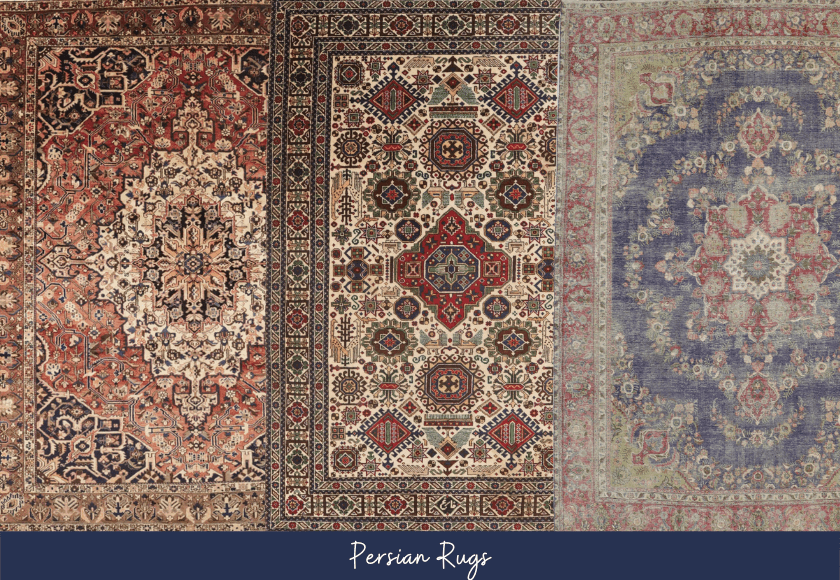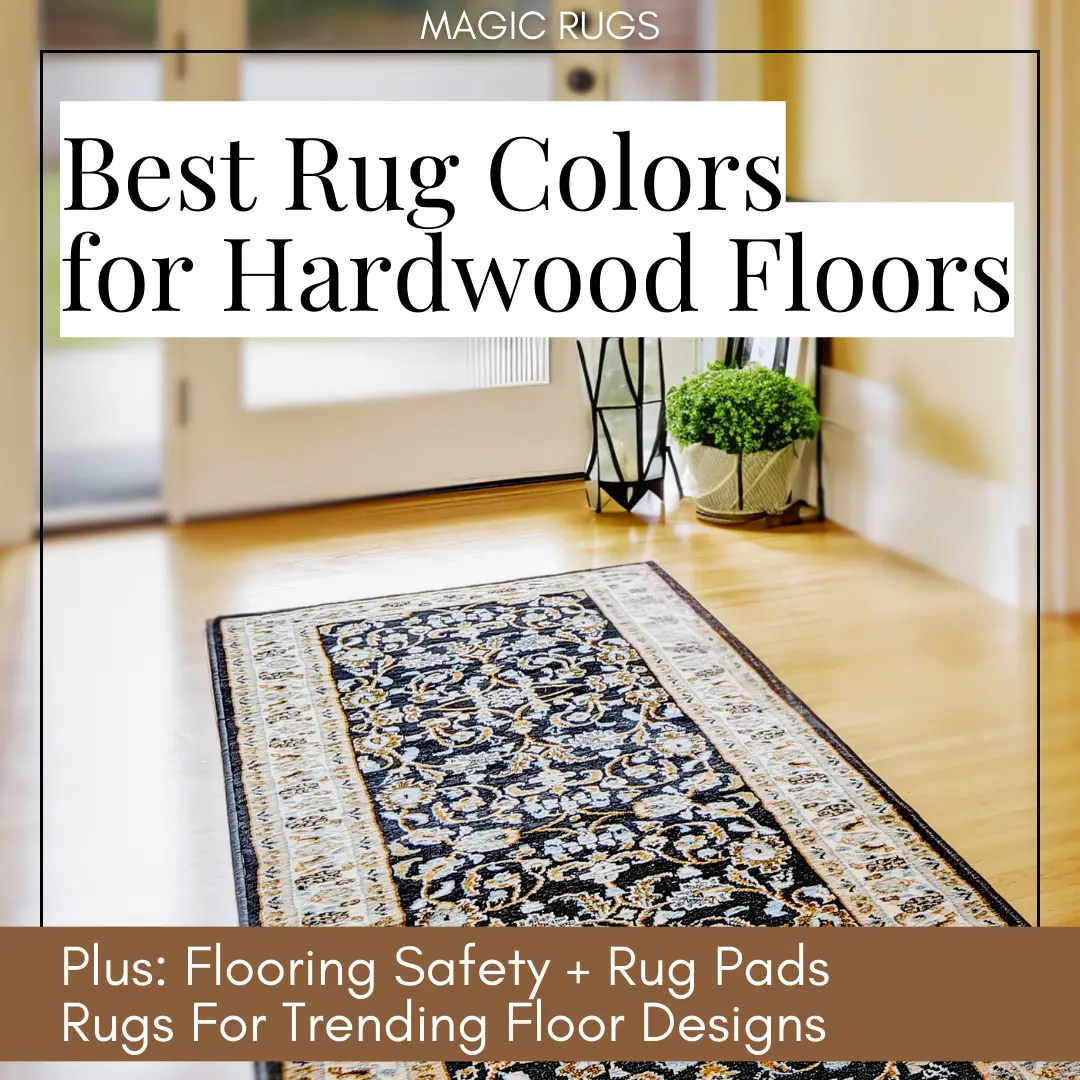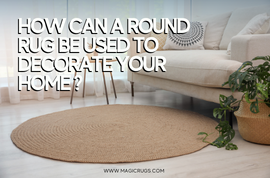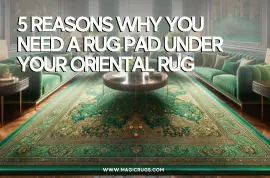These pieces are not merely decorative items but are pivotal in defining the ambiance, character, and aesthetic appeal o...
What You Absolutely Need to Know About Persian rugs
Persian rugs
Decor items of great beauty have come and gone, and interior design trends passed in front of our eyes and went away over the time of a decade. However, one specific item that has not yet passed away, and it has been in the industry for centuries, is a Persian rug. Many people have heard of Persian rugs, they might have even seen a real one either in a very well-decorated household, in the movies, or in a museum. However, as hard to believe as it may appear, Persian rugs are not as well-known as they should be. Their rich history of more than 2000 years, their variety of uses around the house or the office, or the details of their manufacture. That is why today’s article is going to discuss the basics of Persian rugs: their origins, colors, patterns, how people style them around the house, and more.
What You Absolutely Need to Know About Persian rugs
When decorating the rooms of your household, we may keep several parameters into account; the size of the room, the colors, the style and age of the ambiance, and choosing which are the right items to complement the piece might seem to be a complicated task. However, allow us to remind you that there is no way to be wrong with Persian area rugs.
Globally admired by multiple antiquities experts and interior designers, there is not a piece of furniture or decor that holds as much prestige and beauty as a Persian area rug. With their origins dating back more than 2000 years, these beautiful and elegant pieces are still in vogue in many modern households. There are however many things about them that we still ought to know before implementing one into our decorations.
What are Persian rugs?
Persian rugs are traditional Oriental and handwoven rugs by nomadic tribes of Iran for centuries. They normally have a soft backing and their designs and patterns, which are often derived from old folkloric themes, have a mirrored structure, which means they have exactly the same design on both sides but are inverted.
Persian rugs are woven with wool, cotton, or silk – and in extremely rare cases, gold thread, in a wide variety of colors, you can find, for instance, a red Persian rug , to match tanned colors in room decor, or even find a blue Persian rug to match with a cream and white decor energies.
One of the most important facts about Persian-style rugs is that their colors come from natural, vegetable dyes to pigment the fibers, so the fibers retain their brightness for much longer -Persian rugs are known for their bright, intense colors-.
Origins of Persian rugs
The first Persian rugs were made in the Middle Ages by nomads who traveled across the Silk Road. They were first created out of the necessity of these tribes to cover their refuges’ floors, to protect them from cold and dampness; protection they could easily find in a rug, Persian rugs usually have, therefore, great resistance to external elements.
According to multiple historians, it was Cyrus the Great, who conquered Babylon in 539 and who was in awe of the beauty of these first nomad pieces, the one to introduce the art of carpet making to the nobles of Persia.
Further in time, it was during the 1800s that European countries discovered Persian rugs for the first time. Since then, they have become one of the more popular types of rugs available in a wide range of sizes, styles, and colors.
The history of Persian rugs dates back several centuries before Christ, but modern pieces were created as recently as the 1940s. The latency of the Persian decor style has been maintained over the centuries thanks to its elegant beauty and rich cultural history.
Multiple uses of Persian Rugs
Persian rugs come in many different sizes and styles. Their sale rates in the U.S. are tremendous, with a great number of people buying area rugs for their homes or using them in their offices to add texture or texture to a room’s hardwood floor. But these are not the only purposes a Persian rug could work for.
Rather than only being used as flooring in the living room or the dining room like most other rugs, they are usually placed on top of furniture, as a very exotic tablecloth, or against walls to add texture and color to a room.
One final use is one of the Persian runner Rugs , often used in the hallways, kitchen, bedroom, dining room, or even on the walls to add the specific enfilade effect every house owner should want to add to their art deco.
Prices of Persian rugs
Persian and oriental rugs vary in price depending on their quality. Most are hand-woven with modern looms. They can be found at prices ranging from $500 to over $700.
However, it is not uncommon for antique or vintage Persian rugs to be sold at auction for hundreds of thousands of dollars! This is because the wool and silk used in them are very hard to come by today and were extremely costly when originally created. Some of these rugs can only be found at museums or other very rare sources.
There are, however, some ways to find beautiful Persian area rugs for your household with the aid of Magic Rugs, which definitely has the best selection of Persian rugs! We have curated a collection of handmade oriental rugs that match perfectly with any farmhouse style!
Where to find the perfect Persian rug?
It might be difficult to figure out which places one should visit to find the Perfect Persian rug to decorate your home and this is because there are many rug shops and markets in the world which are now selling Persian rugs and some of them might not be as good as expected.
However, here at Magic Rugs, we offer a wide and comprehensive catalog with impeccable quality at affordable prices. With our help, you can find the perfect Persian rug for your home.
Explore more trending collections!
Share:





